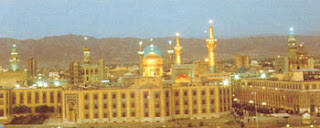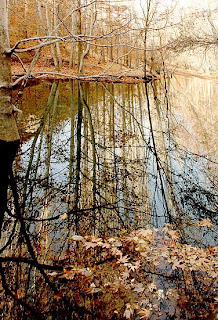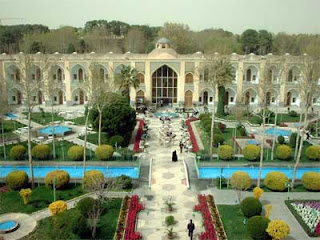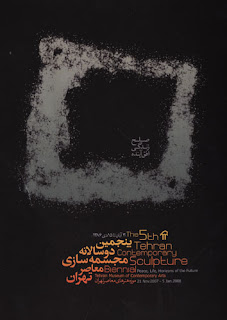

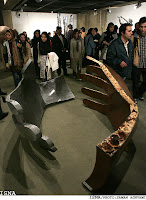
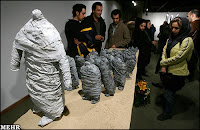
I didn't take pictures from the pieces (as it was prohibited), but the catalog will be published soon. I can only say, I had never seen such a sizeable collection of OUTSTANDING sculptures since I last visited Rodin's exhibition!!
This year’s biennial focused on the central theme of “Peace, Life, and the Future Horizon”. The international art critic Robert C. Morgan and Korean artist Chong Son were among the foreign jury members, and the Iranian jury members were Behruz Darash, Hamid Rezaii and Saeid Shahlapur. The Iranian Academy of Arts, the Art Department of the Ministry of Culture and Islamic Guidance and the Tehran Museum of Contemporary Art cosponsored the event.
I mention the names of my favorite artists and hope to find pictures of their works, somehow.

Parastoo Ahovan
Mohammad-Reza Avishi
Safa Hosseini
Golnaz Behroozi-Nia
Elena Nabiollahi (special prize of under-35 yrs old sculptor)
Taha Behbahani
Behdad Lahooti
Behruz Amiri Raad
Malek Dadyar Garrossian
Kambiz Sabri
Iraj Karimkhan zand (permanent installation?)
Mohammad-Reza Zabihollah Zadeh
Azadeh Tayebi
Fariba Allameh
Amin Balaghi Inanlu
Behruz Darash (permanent installation?)
Mohsen Asrarian
Hamid-Reza Jadid & Mona Rostam Zadeh *** (First Prize) (a mass of clay women facing a mirror, very poignant!)
Farzaneh Abdoli
Mansoor Tayeb Zadeh
The second prize went to Mahsa Karimzadeh. Kurosh Golnari and Hassan Razqandi shared the third prize.
In total, 371 sculptors (age 17-85 years) had participated (163 women/208 men). A total of 112 pieces were accepted in competition.
